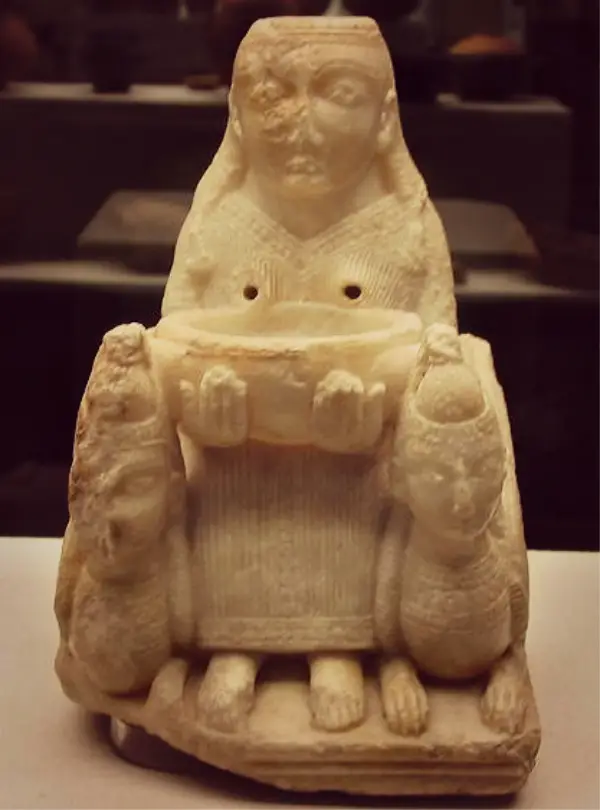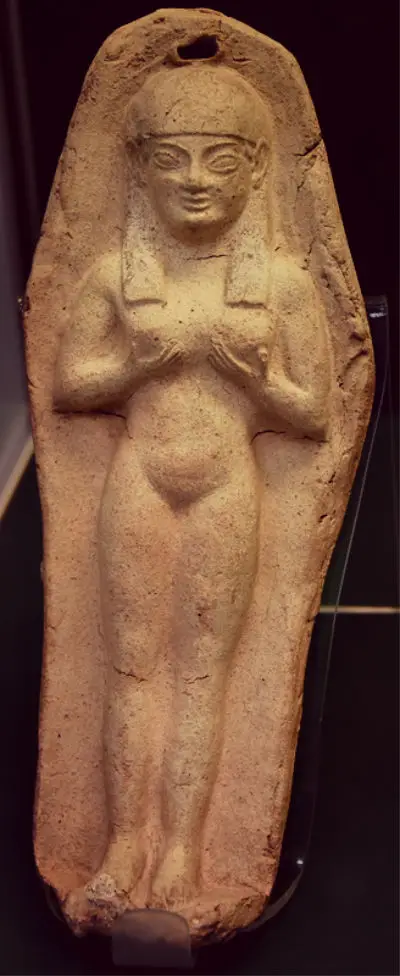A Symbol of war, sexuality, fertility
Astarte was a major goddess who was worshiped from the Bronze Age through the 6th century AD. Astarte was known as the evening and morning star. She was the chief deity of Sidon, Tyre, and Elat. In Egypt, they worshiped her as a warrior goddess. She was paired with Anat, who is associated with war and bloodshed. Astarte and Anat were considered daughters of Ra, the sun deity. In North Africa, Astarte was assimilated into Isis. In Phoenicia, Astarte is the daughter of Ge, the Earth and Epigeius, the sky. Astarte’s brother was Elus, who banished their father, Epigeius. Epigeius tricked them and sent Astarte, his virgin daughter, and her sisters to Elus. They all ended up marrying Elus, and Astarte bore Elus seven daughters who became the Artemites.

Astarte also gave birth to two sons with Elus named Pothos and Eros. With the consent of Elus, Astarte later reigned over the land with Hadad, the god of storms and rain. Astarte wore a bull’s head to symbolize Her sovereignty. In Israel, there have been figures of Astarte found showing her with two horns.
There are many symbols associated with Astarte including the bull, dove, a star within a circle a lion, horse and the sphinx. Another symbol of Astare that came out of North Africa is a modified Ankh. It has a lunar disk surmounted by horns standing above the pyramid. The horns represent the bull, the lunar disk represents the moon, and the triangle represents the pyramid.
The Phonecian symbol for Astarte is a woman with upraised arms. Her face is a disk, and her body is a triangle. She was considered the Goddess of Syria, Phonecia, and western Mediterranean colonies. Astarte was referred to as Astroarche or Queen of the Stars. She was also referred to as Tanit. Her symbol was also a lotus flower, the flower of life.

In Judah, Astarte was named Ashtoreth. This is a combination of Astarte and boshet, which means shame. She was a goddess of nature. Throughout the holy land, shibboleth were brought to the temples of Astarte. Shibboleth was the sacred ears of grain. The shibboleth would be displayed at the culmination of the fertility rites to Astarte. The shibboleth was considered a sign of paganism.
Astarte is asteroid 672. Astarte is the counterpart, other identity, and sister to Venus in astrology. Astarte is both fierce and erotic. She is both gentle and ferocious in war and love.
Astarte was probably the inspiration for Ishtar and Aphrodite. Ishtar was the goddess of sexual love and war, while Aphrodite was the goddess of sex, procreation, and love.
Symbols Menu:» Amulet
» Ajna
» Arsenic
» Merkaba
» Hung
» Yin Yang
» bindi
» IK Onkar
» Khanda
» Halo
» jiahu
» Tau
» Uraeus
» Menorah
» Quincunx
» Tilaka
» Taijitu
» Vajra
» Chai
» Chi Rho
» Bagua
» Dragon
» Hunab Ku
» Caduceus
» Infinity
» Ichthus
» Hedjet
» Lauburu
» Om
» Ankh
» Chalice
» Pentacle
» Maat
» Ogham
» Mandala
» Kartika
» Khamsa
» Heart
» Labrys
» Sun Face
» Raven
» Triskele
» Scarab
» Dove
» Hanukia
» Anubis
» Trishula
» Durga
» Mezuzah
» Bay Tree
» Geruda
» Kinnara
» Quito
» Condor
» Blue Jay
» Falcon
» Makara
» Rosary
» Uluru
» Apsaras
» Hanuman
» Serpent
» Minotaur
» Mercury
» Apex
» Vestra
» Yoni
» Astarte
» dakini
» Calabash
» Mandrake
» Rebis
» Typhon
» Vegvísir
